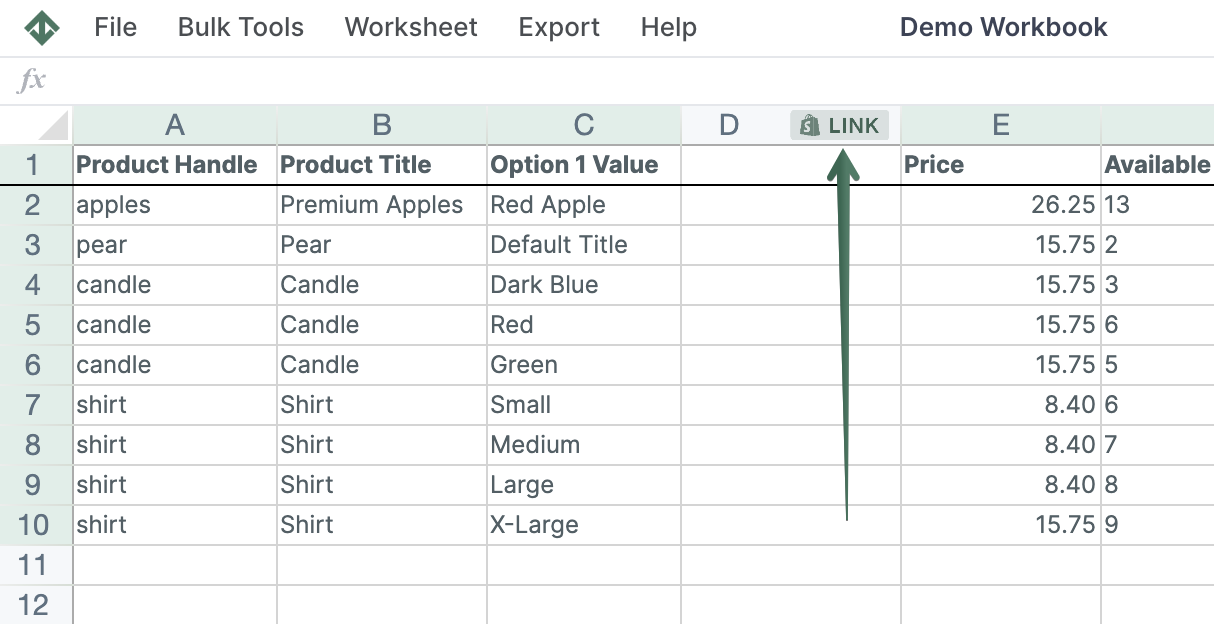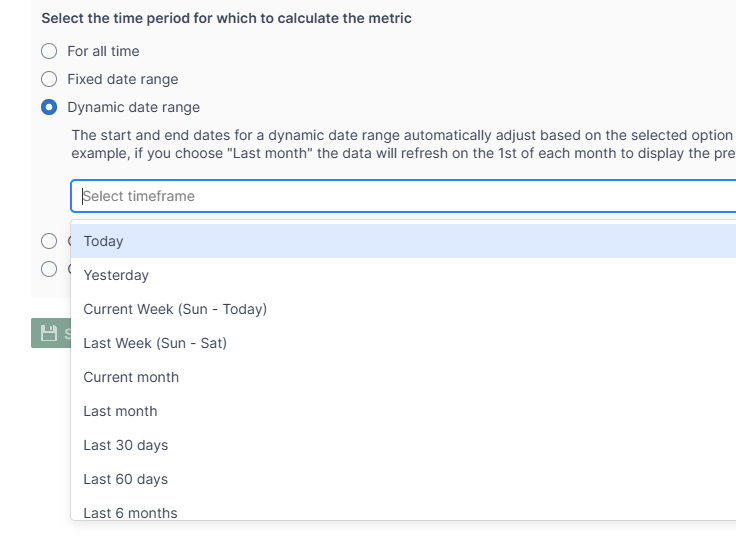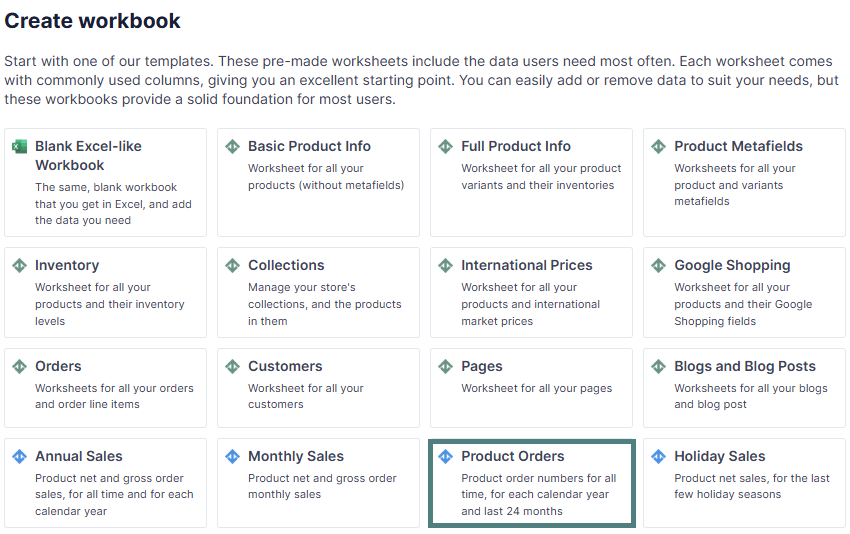Shopify Orders Count Analytics
The Orders Count metric in Shopify represents the total number of orders per product, collection, or customer.
What is Orders Count used for?
- Orders Count measures how often products are being purchased,
- and can show your customers’ loyalty and engagement levels, thus indicating the effectiveness of your marketing and retention strategies.
How to add Orders Count data to your worksheet
If you have already created a Mixtable workbook for your Shopify store, you can quickly add the Orders Count to an existing worksheet.
- The worksheet needs to show product, collection, or customer information. E.g., Products - Complete, Product - Basic, Manual Collections, Automated Collections, or Customers.
- Next, choose an empty column (or insert a new one) and click the Link button from the column header.

-
From the Shopify Sync Settings window, choose Analytics
-
Then, select the Orders Count metric
-
Select the time range that you want the Orders Count to be calculated for
- For all time - all orders since the creation of the store
- Fixed date range - show data for a specific period between two dates
- Dynamic date range - calculate the Orders Count for a dynamic time period in the past, e.g., last 7 days, last 30 days. If you select this option, the data will be recalculated daily as the date range window moves forward.
- Calendar year and month - show the Orders Count for a specific year (e.g., 2024) or a specific month (e.g., February 2024).

PRO TIP - Start with one of our pre-built Analytics templates
Instead of manually loading the Orders Count data in a worksheet, you can get going faster by starting with one of our Analytics template workbooks. These workbooks come pre-loaded with the types of analytics that our clients tend to need most.
- After installing the Mixtable Analytics app, click the Create a Workbook button.
- In the dialog that appears, select the Product Orders pre-built templates.

Optional - Orders Count for a Customer Segment
Mixtable Analytics allows the Orders Count data to be filtered based on the customer segments you have created in Shopify.
-
From the Shopify Sync Settings window, choose Analytics
-
Then, select the Orders Count metric
-
Select the time range that you want the Orders Count to be calculated for
- For all time - all orders since the creation of the store
- Fixed date range - show data for a specific period between two dates
- Dynamic date range - calculate the Orders Count for a dynamic time period in the past, e.g., last 7 days, last 30 days. If you select this option, the Orders Count will be recalculated daily as the date range window moves forward.
- Calendar year and month - show the Orders Count for a specific year (e.g., 2023) or a specific month (e.g., September 2024)
-
Now, use the Filter orders based on Customer Segment defined in Shopify Admin section to select the customer segment to be used.

Note: The customer segments shown are the ones you have defined in your Shopify Admin. To add or change your segments please use the Shopify Admin, and Mixtable will reflect your changes automatically.
Optional - Orders Count by Country
-
From the Shopify Sync Settings window, choose Analytics
-
Then, select the Orders Count metric
-
Select the time range that you want the Orders Count to be calculated for
- For all time - all orders since the creation of the store
- Fixed date range - show data for a specific period between two dates
- Dynamic date range - calculate the Orders Count for a dynamic time period in the past, e.g., last 7 days, last 30 days. If you select this option, the Orders Count will be recalculated daily as the date range window moves forward.
- Calendar year and month - show the Orders Count for a specific year (e.g., 2024) or a specific month (e.g., May 2024)
-
Use the Filter orders based on customer’s country to select the country for which to show the Orders Count.

You are ready!
Well done! With Mixtable you can use spreadsheet functions to operate with the data, such as:
Find out more about the Mixtable suite of products here.




